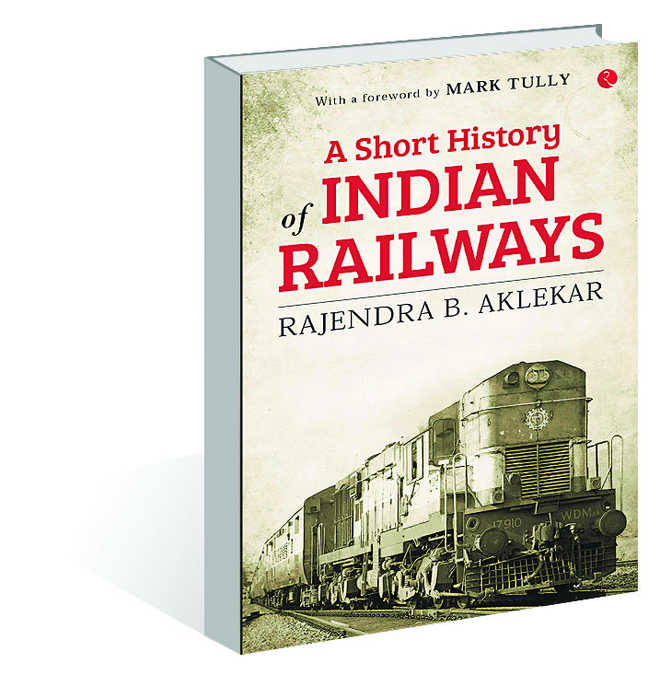Gaurav Kanthwal
What is the Hindi word for a train? Loh-path-gamini (one that runs on an iron road). Don’t ridicule someone who does not know the Hindi equivalent of this British invention, for, we are living in the times of metro, mono-rails and bullet trains. Ever since the first official passenger railway line in India was thrown open (April 16, 1853) between Bori Bunder and Thane, distances have been shrinking but the history of Indian Railways has been expanding.
Historian Rajendra Aklekar, in his new book, A Short History of Indian Railways, says the history of the railways began much earlier, in the 1830s. In a chronological compilation of the anecdotes and sketches of Indian Railways, he takes us through its journey of more than 189 years.
Aklekar’s first book, Halt Station India: The Dramatic Tale of the Nation’s First Lines, had also documented the history of India’s earliest railway lines. In the laying of the lines across the length and breadth of the country, geography naturally finds its way into the narrative, but it is the sociological impact of this gargantuan process that a reader would be more interested in. Forced evictions, clashes of social-religious ideas, boundary disputes and labour exploitation — how these issues impacted the Indian psyche? It is said that the laying of a railway line colonialises three generations of the people from the area it passes through.
Aklekar assiduously records the red-letter days, painstakingly describes how Englishmen overcame the challenges of laying railway lines in the rugged Indian topography but falls short in describing the sacrifices of native Indians, though he does make a light-hearted note of their superstitions, their shock and awe at the sight of lokhandi rakshas (iron demon).
Not surprisingly, there is a reference to the connection between Indian Railways and Jules Vernes’ Around the World in Eighty Days (1873), in which the main character, Phileas Fogg, travels through the Great Indian Peninsula.
Of particular interest to the readers of the northern India region is the recounting of anecdotes related to the Kalka-Shimla railway line. The 2 feet 6 inches (77cm) narrow gauge, which became operational on November 9, 1903, has a spooky tale to it. Legend has it that the tunnel No 33, the Barog tunnel and the Barog railway station, are named after British engineer Colonel Barog, who committed suicide after failing to complete the tunnelling work due to the misalignment of tracks. The government fined him Rs 1, and this humiliation proved too much for him to bear. Col Barog’s grave and the old tunnel are still there, one km away from the functional tunnel. It is said that the friendly ghost of Col Barog can still be seen around the abandoned tunnel. The 1.14-km tunnel, the longest on the stretch, finally saw the light of the day after Baba Bhalku, a local saint from Jhaja near Chail, who possessed supernatural engineering skills, guided the British engineer. The Shimla Gazette notes that the Viceroy honoured Baba Bhalku with a medal and a turban. The story gained credence when Northern Railways opened the Baba Bhalku Rail Museum in Shimla in 2011.
To those who believe that rail lines became a reality in India only because of the British, the author says that when the British moved ahead to exploit new countries, they uprooted some of the existing lines. The 218-page book is a reminder that the history of Indian Railways is as much a history of a nation’s exploitation under the British as it is of modern means of transportation.
Unlock Exclusive Insights with The Tribune Premium
Take your experience further with Premium access.
Thought-provoking Opinions, Expert Analysis, In-depth Insights and other Member Only Benefits
Already a Member? Sign In Now











